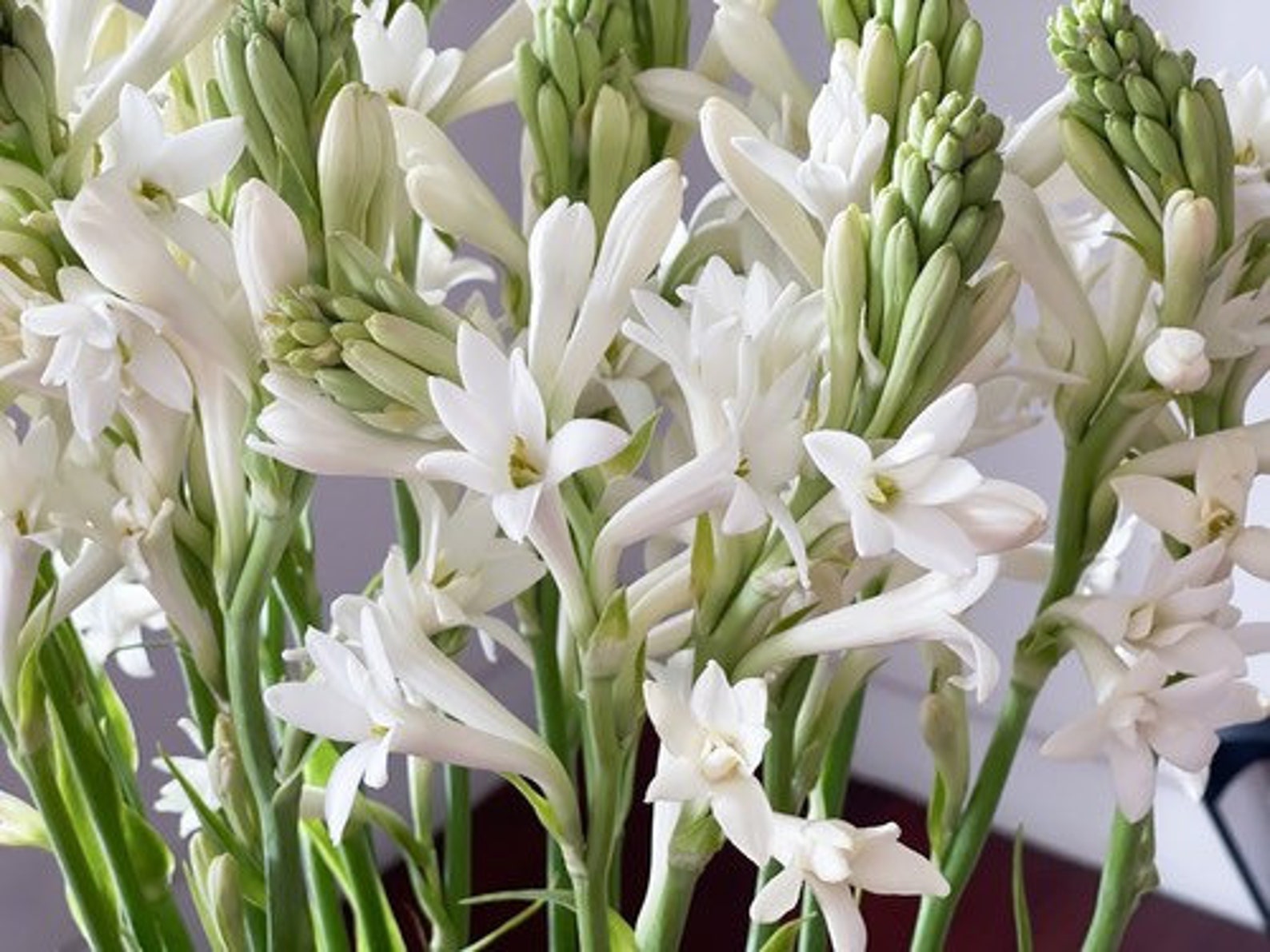
Cultivation of Tuberose
Botanical Name: Polianthes tuberosa
Family: Amaryllidaceae
Importance and Uses
- Cut Flower: Tuberose is one of the most important cut flowers known for its delightful appearance, sweet fragrance, and long vase life. It is commonly used in bouquets and vase decorations.
- Flowers: The flower stalk typically grows 75-100 cm tall, bearing white, fragrant flowers.
- Cultural Significance: Tuberose is commonly used for traditional purposes like making garlands (Veni, Gajara) and floral decorations in festivals, weddings, and other cultural events.
Varieties of Tuberose
- Single Flowered (5 petals): Calcutta Single, Phule Rajani, Bangalore Single, Coimbatore Single.
- Semi Double (10 petals).
- Double Flowered (More than 10 petals): Pearl (popular variety).
- Variegated Leaves (Yellow margin): Variegated Single: Rajat (white margin). Variegated Double: Dhawal (golden margin).
- Other Varieties: Shrungar, Prajwal, Suhasini, Vaibhav.
Soil: Ideal soil type: Medium sandy loam with good drainage. Well-drained soils are crucial for preventing waterlogging and promoting healthy growth of flowers and bulbs.
Climate: Tuberose requires moderate humidity and mild temperature for optimal growth. Very high temperatures or frost can damage the crop. A temperature range of 25-30°C is considered ideal for growth.
Propagation:
-
- Tuberose is propagated using bulbs. The ideal bulb size for planting is a diameter of 1.5-2.0 cm and a weight above 30 grams.
- The bulbs should be healthy, free from pests and diseases.
- Before planting, bulbs should be treated with 0.1% Carbendazim fungicide for 30 minutes to prevent fungal infections.
- Best Time for Planting: April to May is the ideal planting time for tuberose bulbs.
- Spacing: The recommended spacing for planting is 30×30 cm or 30×20 cm, depending on the growth habit and variety.
- Seed Rate:
- Approximately 5000-6000 bulbs/ha.
- This corresponds to 1,60,000 to 2,50,000 bulbs/ha.
Nutrient Requirements
- Fertilizer Application:
- Organic matter like Farm Yard Manure (FYM): 20 tons/ha.
- NPK Fertilization: Apply 200:150:200 kg NPK/ha.
- Nitrogen (N) should be applied in two split doses:
- First dose: At 45 days after planting (DAP).
- Second dose: At 90 DAP.
Harvesting of Flowers
- Flowering Time: Flowers are ready for harvest 3-4 months after planting.
- Cut Flower Harvesting:
- The spikes should be cut when the lower 1-2 florets have opened, as this ensures the flowers are in full bloom and ready for use.
- Immediate post-harvest handling:
- The cut spikes should be immediately placed in a bucket of water to maintain freshness.
- After harvesting, flowers should be placed in a shade, wrapped in wet cotton cloth or stored in a gunny bag to retain moisture and prevent wilting.
Yield
- Commercial Yield:
- A planted bulb will give a commercial yield for up to 3 years.
- The typical yield is about 7-8 lakh spikes/ha or approximately 7-7.5 tons of loose flowers/ha.
Uses of Tuberose Flowers
- Garlands and Veni: The long, fragrant spikes of tuberose are widely used for making garlands, Veni, and Gajara for religious and ceremonial purposes.
- Bouquets: Tuberose is also commonly included in floral bouquets and decorative arrangements due to its pleasant fragrance and elegant appearance.

